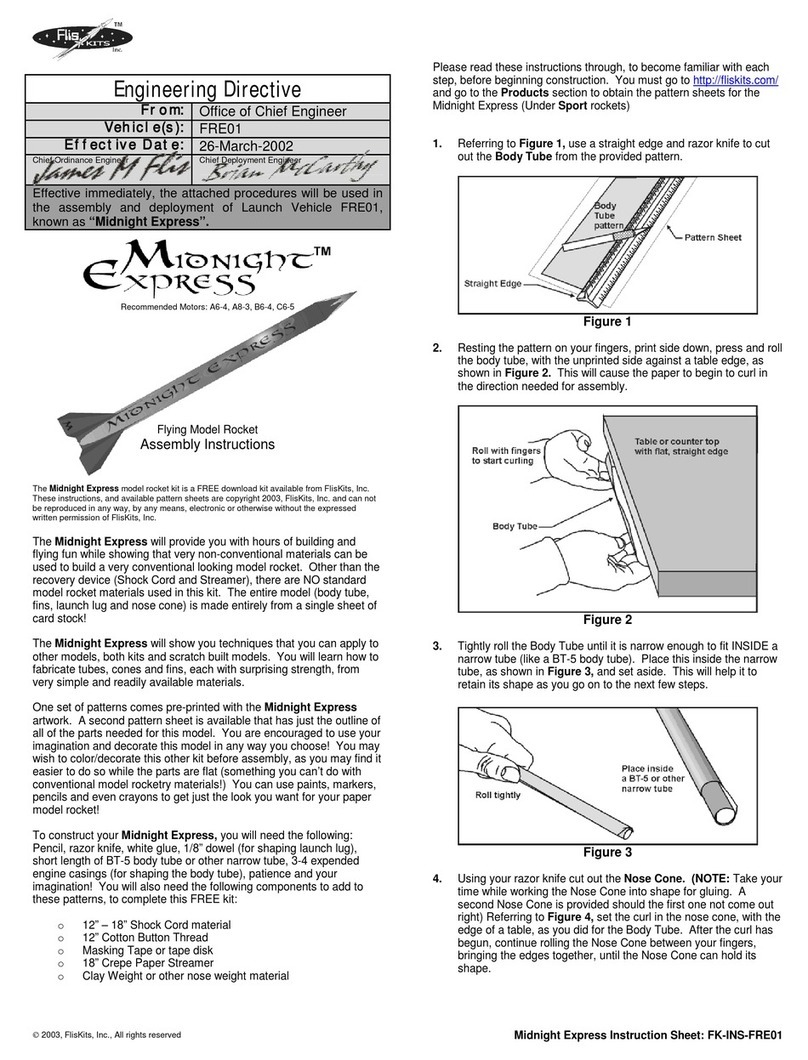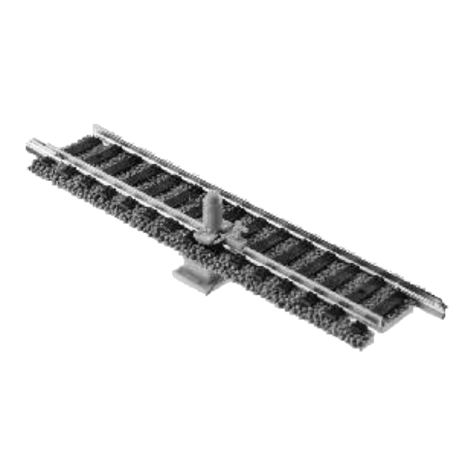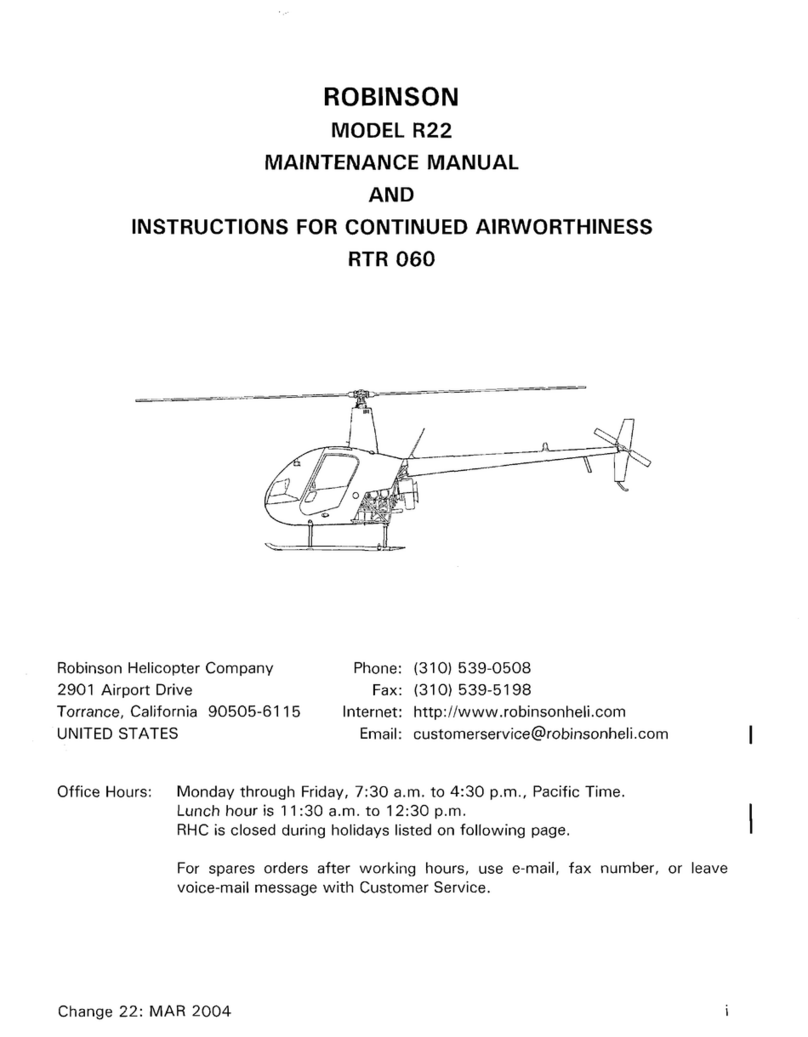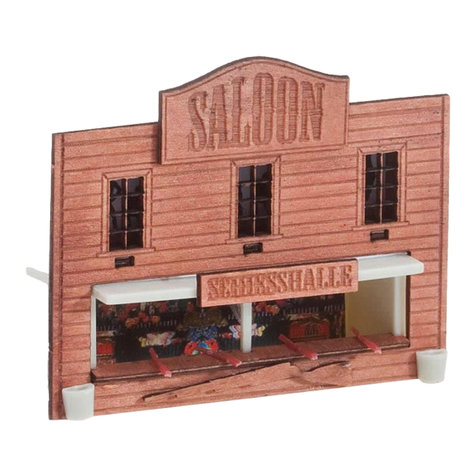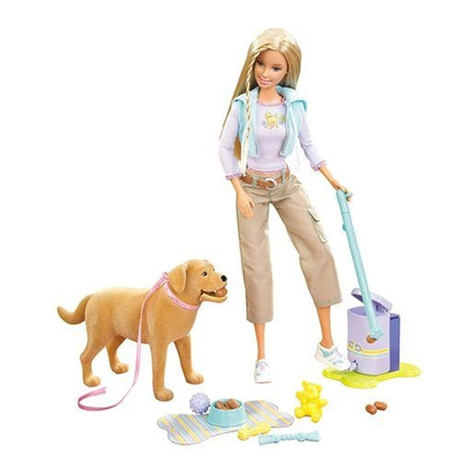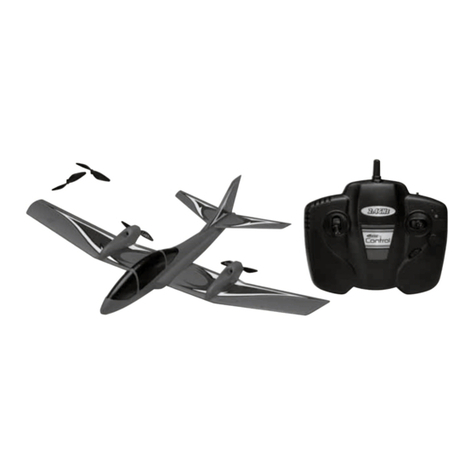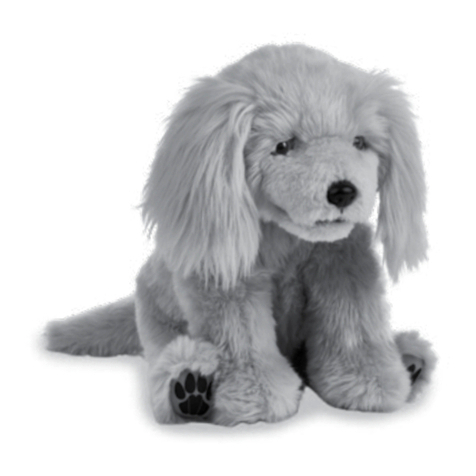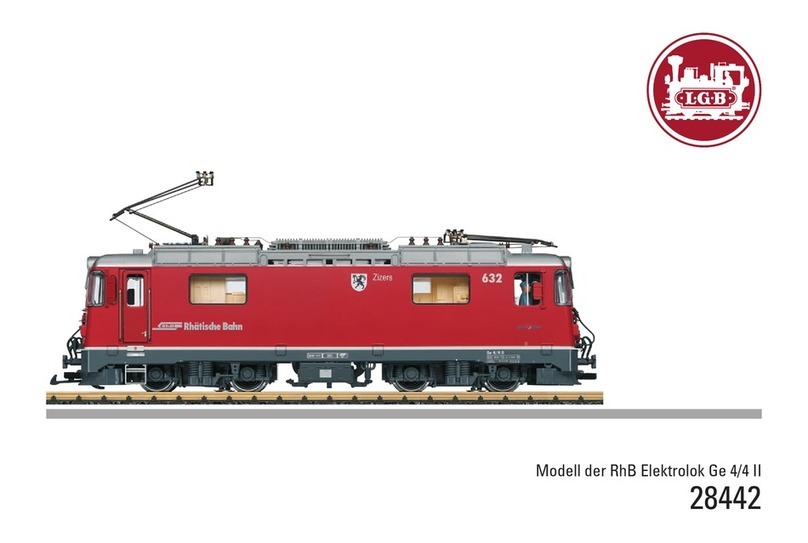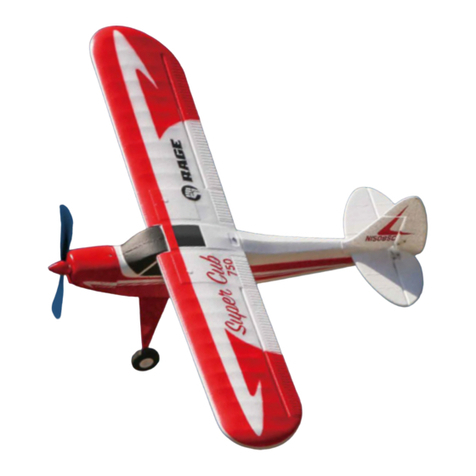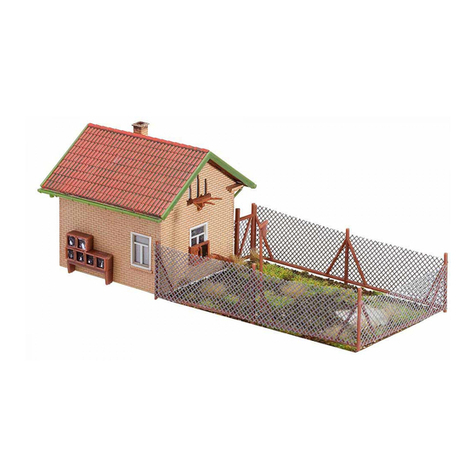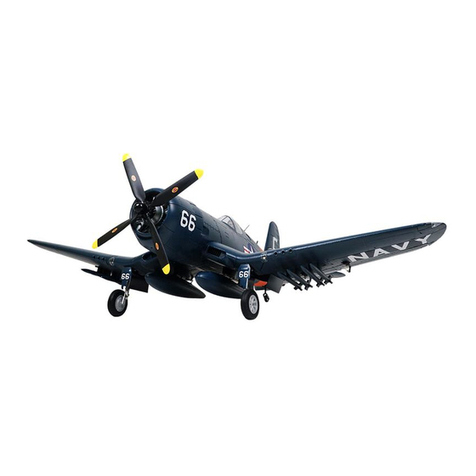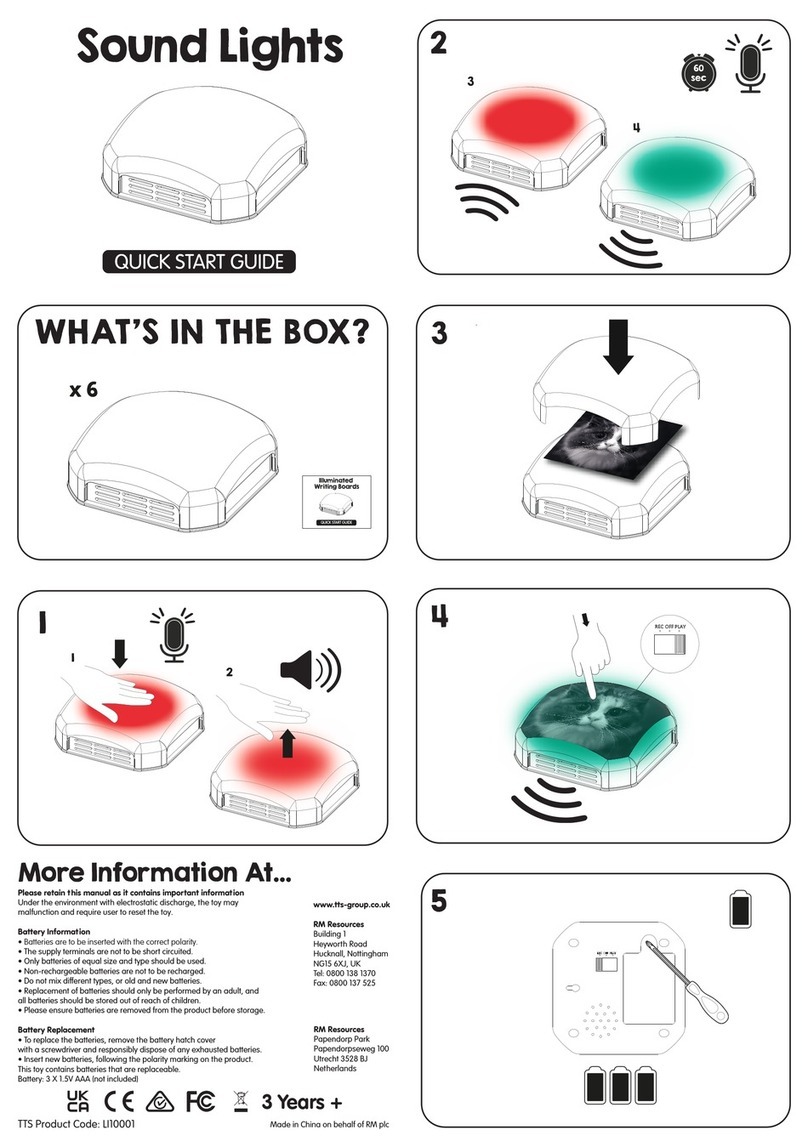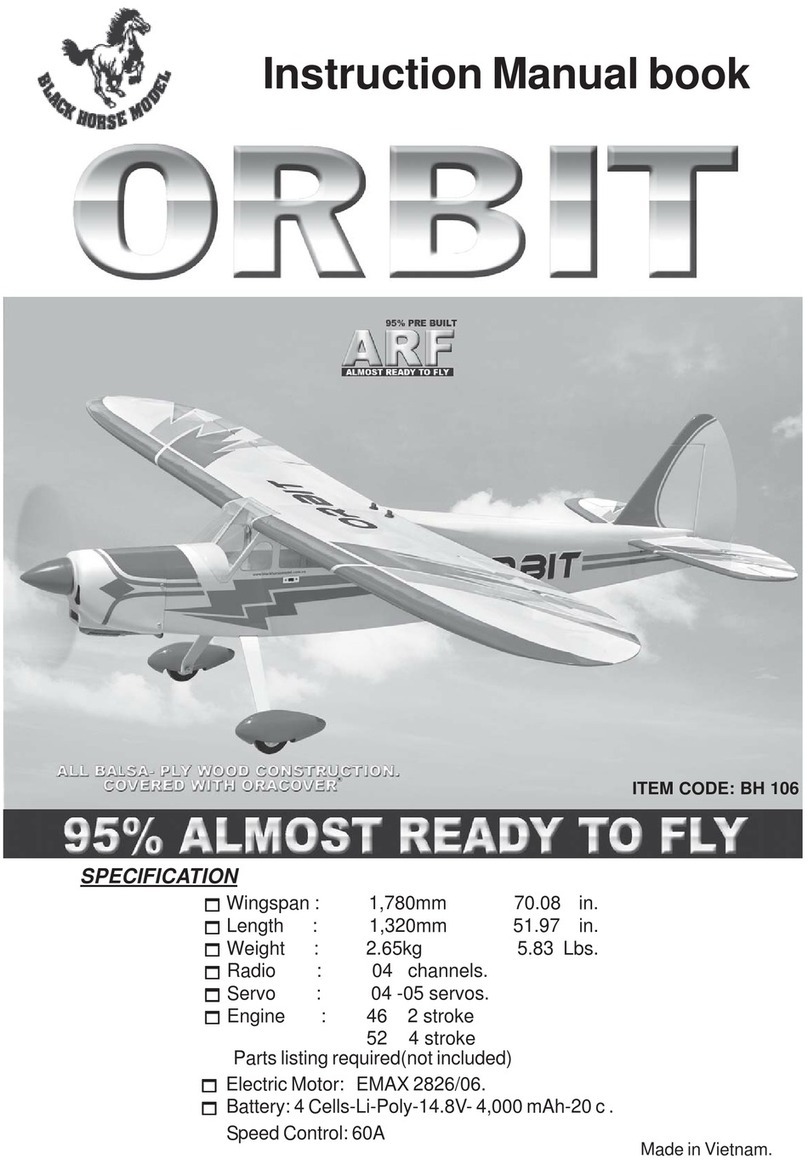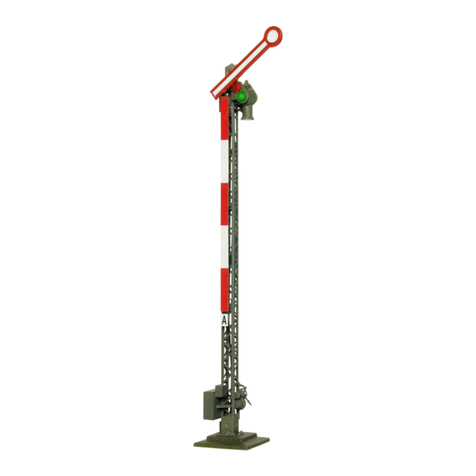Flis Kits Thing-a-ma-Jig User manual

?2006,FlisKits, Inc., All rights reserved - Kevlar® is a registered trademark of Dupont Thing-a-ma-Jig Instruction Sheet: INS-SP015
Thing-a-ma-Jig Finishing
To “Finish” a model means to apply paint and other decorations to
complete the look of your model. Meaning to “apply a finish”. That is what
we will discuss in this section.
Applying a finish (painting) to your model can be a simple or a complex
process depending on the look that you want, your skill level and how much
time you wish to spend on this part of your model build activity. Once
assembled, you can spend as little as 20 minutes to as much as 10 days
applying the finish to a model the size of the Thing-a-ma-Jig.
This section will talk about the simpler approach to finishing your model.
These lessons will provide you with the experience you will need as you
advance and move on to the more complex finishing methods.
Read each step carefully. Don’t be shy about asking an adult for help in
understanding how to perform a step. This will go a long way to helping
you learn the tricks of creating a beautiful model!
Finishing:
Since the Thing-a-ma-Jig is made from paper, cardboard and wood, you will
need paints and supplies designed for these materials. A good beginning
list of finishing materials could look like this:
Your imagination (ALWAYS first on my list!)
Sand paper (200, 400 and 600 grit) (The grit number on sand
paper tells you how many grains of sand there are along every
inch. So 600 grit paper has 600 tiny grains of sand for every
inch. The higher the number the finer the sandpaper.)
Wood Glue (the yellow glue)
Water based art paints (Spray paints and acrylics will be used
when you have gained some additional experience).
Magic Markers (These can be used WITH or INSTEAD of paint)
Stickers (These can really help dress up your model!)
Paint brushes.
Old clothes (do NOT ruin your good clothes!)
A cup of water (for cleaning your brushes)
Thick layers of newspapers (to protect your table)
Soap, water, and paper towels for clean up.
1. To begin, carefully and lightly sand your fins. The balsawood fins may
have little fibers (hairs) that get pulled up from the wood. Sanding
them lightly will reduce these. You may also wish to sand off the tips
of the fin tabs that stick through the fins on the Fin Unit. Sand these
until they are even with the surface of the fin.
2. Check the glue filets you applied in Step 27. When glue dries it can
shrink, leaving holes in glue filets. If this has happened, apply another
thin fillet to try to cover these holes.
3. If you wish, you can choose to “seal” all of the balsa wood parts of
your model. There are many methods that can be used. Ask your
hobby dealer or hardware store for suitable wood sealers and how to
apply them. This helps to provide a very smooth finish to your fins
before painting them, but is not required.
4. Select the colors you want to use. Starting with the lightest color first,
paint your rocket any way you would like. It is usually easier to paint
your entire model one light color (yellow, for example) and then when
it is dry, add other darker colors (like blue or red) on top of the yellow.
5. Be sure to clean your brush completely as you change colors.
6. Remember that wide brushes are good for large areas (body tubes
and the flat parts of the fins). Narrow (thin) brushes are better for
smaller areas (the edges of the fins, launch lug, etc) and details (small
lettering, windows, etc)
7. Be sure to clean up all of your tools and your work space when done.
Be sure that all paint containers are closed as well as the glue bottle.
Take your time and enjoy the painting part of your model. The most perfect
looking model is one that expresses YOUR imagination and YOUR skills.
Your first rocket may or may not look “pretty” to you. However you will
appreciate how each new rocket looks a little bit better than the one before
as you gain skill and experience. If you want to explore more complex
finishing methods, check out the enclosed Hints-n-Tips sheet.
We hope you enjoy your Thing-a-ma-Jig!
Keep watch for more exciting rocket kits from FlisKits on
our web site http://fliskits.com/
Engineering Directive
From:
Office of Chief Engineer
Vehicle(s):
SP015
Effective Date:
31-March-2006
Chief Ordinance Engineer
Chief Deployment Engineer
Effective immediately, the attached procedures will be used in
the assembly and deployment of Launch Vehicle SP015,
known as “Thing-a-ma-Jig”.
Flying Model Rocket
Recommended Motors:
A8-3. B4-2, B6-4, C6-5
Assembly Instructions
A note to kids and
grown ups who want to be kids again!
OK, now we are going to have FUN! The Thing-a-ma-Jighas
a “Thing”on top and a “Jig” on the bottom with a bunch of
parts in between that you could call “a-ma”…but we won’t.?
Building and flying a model rocket is FUN but it takes careful
work for it to fly properly. When you are building your Thing-a-
ma-Jig, be sure to:
READ each step through carefully as you come to it.
LOOK at each diagram then follow the directions from top to
bottom as you build.
STOP and ask for help when you aren’t sure what to do. It is
much better to ask a question than to make a mistake that
could be avoided.
When you see this little guy looking over the figure it means
that the step needs extra attention from you and maybe even
help from and adult. That might be because you are using a
tool like a hobby knife which could be a safety hazard if not
handled properly. It also could mean it’s very important to do
that step right the first time.
So, instead of reading the back of a cereal box while eating
breakfast, read these instructions and get yourself ready to
have gobs of fun building -and then flying-your Thing-a-ma-
Jig.
Be sure to read the front packaging card, which has lots of
interesting stuff about your rocket on it. And don’t miss the
Model Rocket Safety Code and information about the
National Association of Rocketry (NAR) on the back of the
enclosed warranty card.

?2006,FlisKits, Inc., All rights reserved - Kevlar® is a registered trademark of Dupont Thing-a-ma-Jig Instruction Sheet: INS-SP015
Note to Parents, Teachers, and Leaders
The Thing-a-ma-Jig is a model rocket kit that is designed with
youngsters in mind.
??As far as model rockets go, Thing-a-ma-Jig
assembly is easy!
??Instructions for this kit may look long, but that is
because steps are broken down and carefully
explained in kid-friendly terms.
??There are some steps (using cutting tools, knot tying,
critical assembly steps) that may require adult
assistance, depending on the age and experience of
the child. These are highlighted in the instructions
with an adult looking over the step.
Thing-a-ma-Jig Kit Contents:
The figure below shows a picture of each of the parts in your
Thing-a-ma-Jig kit. Take a minute to find these parts and
become familiar with their names.
Required for assembly and finishing
To properly assemble the Thing-a-ma-Jig you will need the
following tools and supplies: White glue (Elmer’s School Glue
is not recommended as it is too thin) (NOTE: Do NOT use Hot
Glue!), pencil, ruler, scissors, masking tape, hobby knife, and a
hole punch.
For finishing see the section on finishing (on the first page).
Steps 1-7 Engine Mount Construction
1. Make a mark on the Engine Tube ¼” from one end, as
shown in Figure 1. Using a razor knife, cut a short slit in
the tube, at this mark. ADULTS may wish to help with this
step. (Thing-a-ma-FACT: The Engine Tube is used to hold the
model rocket motor in place during flight)
Figure 1
2. Locate the Engine Hook and insert one end of it into the
slit you made as shown in Figure 2. (Thing-a-ma-FACT: The
Engine Hook is used to help hold the rocket motor inside the
engine tube)
Figure 2
3. Figure 3 shows you how to glue in the Engine Block.
(Thing-a-ma-FACT: The Engine Block blocks the motor to keep
it from shooting up into the rocket during flight. A Bead of Glue is
a wide line of glue, kind of like the drawing below.)
Figure 3

?2006,FlisKits, Inc., All rights reserved - Kevlar® is a registered trademark of Dupont Thing-a-ma-Jig Instruction Sheet: INS-SP015
4. Review Figure 4 to glue on one of the two Centering
Rings. (Thing-a-ma-FACT:The Centering Rings are used to
hold the engine tube in the center of the body tube.)
Figure 4
5. Referring to Figure 5, carefully cut out a 1/8” section from
the other Centering Ring. Scissors can be used.
ADULTS may wish to help with this step.
Figure 5
6. Figure 6 shows how this modified ring is glued to the
engine tube.
Figure 6
7. Find the piece of yellow Kevlar® Cord (string). Securely
tie this to the top of the Engine Mount as shown in
Figure 7.
(Thing-a-ma-FACT: Kevlar® Cord is a very strong thread that is
used here to provide a strong connection between the bottom of
the rocket and the nose cone. Kevlar® thread is SO strong that it
is also used to make bullet proof vests!)
Figure 7
Steps 8-12 Fin Assembly
8. Figure 8 shows you many important details about the
3 fins that are provided with your model rocket kit. These
fins were cut with a computer controlled laser beam for an
exact fit! Carefully remove the 3 fins from the sheet of
balsawood and place a small mark at the leading edge of
each fin. (Thing-a-ma-FACT:Fins are used to control the
model’s flight by keeping it pointed straight during flight.)
Figure 8

?2006,FlisKits, Inc., All rights reserved - Kevlar® is a registered trademark of Dupont Thing-a-ma-Jig Instruction Sheet: INS-SP015
NOTE: The next several figures will show you how to
assemble your “Jig/Tech” Balsa Fin Unit with the 3 fins
provided. This first time through will be PRACTICE (without
glue) so that you can become used to doing it. After you have
practiced these steps, you will repeat them with glue. (Thing-a-
ma-FACT:Jig/Tech is just a fancy name we came up with for our fins
with tabs and slots. We think it’s cool ?)
9. Referring to Figure 9, connect the first two fins together as
shown. The INSET drawing in the lower right shows you
what your fins should look like connected together.
Figure 9
10. The third fin is rather tricky the first time, but real easy
once you figure it out. Figure 10 shows you how to
connect this third fin to your Fin Unit.
Figure 10
11. When you are done, your Fin Unit should look like that
shown in Figure 11.
Figure 11
12. That was a good practice! Now that you are familiar with
these steps, you will take your Fin Unit apart and
reassemble it, but with GLUE this time! Figure 12 shows
you how to apply the glue to the glue line on all 3 fins.
Once you have done this, go back and repeat
Steps 9 –11.
ADULTS may wish to help with these steps.
Figure 12
Steps 13-18 Parachute Assembly
13. Figure 13 shows you the Parachute unfolded. You need
to cut out the 6-sided parachute as described. (Thing-a-ma-
FACT: The Parachute is used to slow the model’s descent after
its flight.)
Figure 13

?2006,FlisKits, Inc., All rights reserved - Kevlar® is a registered trademark of Dupont Thing-a-ma-Jig Instruction Sheet: INS-SP015
14. Locate the 6 Tape Disks. Find a circle on a corner of the
parachute and stick on one Tape Disk as shown in Figure
14. Repeat for the other 5 corners. (Thing-a-ma-FACT:
Tape Disks are used to provide added strength to the corners of
the parachute, where the parachute lines (shroud lines) will be
attached)
Figure 14
15. Figure 15 shows you how you can use a hole punch to
punch holes in the center of each tape disk.
ADULTS may wish to help with this step.
Figure 15
16. Locate the white cotton Shroud Line (it is the bundle of
white string held together with tape). Carefully remove the
tape and unravel the thread without tangling it. Referring
to Figure 16, cut this thread into 3 equal length shroud
lines, each about 32” long. ADULTS may wish to help
with this step. (Thing-a-ma-FACT:Shroud Lines are the lines
that connect to the parachute to make it function properly).
Figure 16
17. Referring to Figure 17, tie one of the Shroud Lines to one
of the holes you made in a tape disk. ADULTS may wish
to help with this step.
Figure 17
18. Tie the other end of this same Shroud Line to the next
hole, so that ONE Shroud Line is tied to TWO holes.
Repeat this step with the other 2 Shroud Lines until your
parachute looks like what is shown in the INSET of Figure
18. ADULTS may wish to help with this step.
Figure 18
Steps 19-27 Attach Motor Mount & Fins
19. Locate the “Fin Marking Guide”on the last page and cut
it out carefully. Wrap this around one end of the Body
Tube and tape it in place. Referring to Figure 19, make a
mark on the body tube at each arrow shown on the guide.
Figure 19

?2006,FlisKits, Inc., All rights reserved - Kevlar® is a registered trademark of Dupont Thing-a-ma-Jig Instruction Sheet: INS-SP015
20. You now need to draw a line at all 4 marks on your body
tube. Figure 20 shows you how you can use a “drawer
sill” to draw a straight line. Open a drawer and lay your
body tube just inside the drawer front (this is the “sill”).
Use the top of the drawer front as a guide to draw your
straight line. You can also use the vertical edge of a
door opening, which is called a “door sill”.
Figure 20
21. Locate your completed Engine Mount from Step 7.
Referring to Figure 21, pass the Kevlar® Cord up through
the body tube, from the bottom, until the cord comes out of
the top of the body tube.
Figure 21
22. Referring to Figure 22 apply a bead of glue about 1”
inside the bottom of the body tube. NOTE: If you get
some glue on the Kevlar® Cord, don’t worry, that is fine.
Once the glue is in place, QUICKLY push the Engine
Mount all the way into the Body Tube until the two tubes
are flush (even) with each other, as shown.
ADULTS may wish to help with this step.
Figure 22
23. Make a mark on the body tube, on the Launch Lug Line,
3” from the bottom of the tube as shown in Figure 23.
Figure 23
24. Referring to Figure 24, glue your Launch Lug in place as
shown. (Thing-a-ma-FACT:The Launch Lug is used to guide
the model along its first three feet of flight. This lug slides over a
three foot long “Launch Rod” (thin steal rod) that is on the launch
pad.)
Figure 24

?2006,FlisKits, Inc., All rights reserved - Kevlar® is a registered trademark of Dupont Thing-a-ma-Jig Instruction Sheet: INS-SP015
25. To attach your Fin Unit, you will need to apply a bead of
glue along the bottom 2 inches of each fin line as shown in
Figure 25.
Figure 25
26. Referring to Figure 26, slide the Fin Unit onto the bottom
of the body tube so that the lines of glue fit inside the
CORNERS of the Fin Unit and do not touch the fins. The
bottom of the Fin Unit should be even with the bottom of
the body tube. (Thing-a-ma-FACT:The Leading Edge of a fin
is simply that part of a fin that LEADS the rest of the fin in flight.
You will notice in the figure that the Leading Edge is the edge that
faces the direction of flight. Likewise, the Trailing Edge is the
edge of the fin that TRAILS (is behind) the rest of the fin in flight.
ADULTS may wish to help with this step.
Figure 26
27. Now you must TWIST the fin unit around so that all 3 lines
of glue come into firm contact with the fin unit and the
Launch Lug is now aligned with a corner of the fin unit, as
shown in Figure 27. When complete, apply strong glue
fillets to all 3 corners of your Fin Unit as shown in the
bottom of Figure 27. (Thing-a-ma-FACT:Glue Fillets are like
beads of glue. You apply the bead of glue then smooth it out
with the tip of your finger. This will make the joint very strong and
will also make the joint look better when you apply paint.
ADULTS may wish to help with this step.
Figure 27
Continued onto Step 28 on the next page.
NOTE: The Fin Marking Guide used in Step 19 is found on
the next page. Carefully cut this out and follow Step 19 for
instructions on how to use it.

?2006,FlisKits, Inc., All rights reserved - Kevlar® is a registered trademark of Dupont Thing-a-ma-Jig Instruction Sheet: INS-SP015
Steps 28-31 Nose Cone Assembly
28. Referring to Figure 28, make a hole near the center of the
base of the Nose Cone. Fill the hole with glue then screw
the Screw Eye into place. Screw it in all the way. (Thing-
a-ma-FACT:The Nose Cone is the very top of the rocket and
provides a smooth shape that cuts easily through the air. The
Screw Eye is an attachment point that allows you to connect the
nose cone to the body tube in a later step)
Figure 28
29. Figure 29 shows you how to attach the nose cone to the
body tube using the Elastic Shock Cord. Tie one end of
the elastic cord to the end of the Kevlar® Cord that is
coming out of the top of the body tube. The other end of
this elastic cord gets tied to the screw eye in the nose
cone. ADULTS may wish to help with this step.
(Thing-a-ma-FACT:The Shock Cord is used to act as a “shock
absorber” when the nose cone pops out of the body tube at the
end of the flight, to keep it from breaking the rocket or snapping
the Kevlar® cord.)
Figure 29
30. Referring to Figure 30, tie the parachute shroud lines to
the screw eye as shown. The easiest way to do this is to
pinch the parachute in the very center of the plastic and
sliding your other hand down the parachute to the shroud
lines, gathering them together at the end. ADULTS may
wish to help with this step.
Figure 30
31. Figure 31 shows you how to fold your parachute before
putting it into your rocket. Be sure that the parachute is
folded tight enough to EASILY fit into the body tube.
Figure 31
See the first page for finishing instructions.
Other Flis Kits Toy manuals

